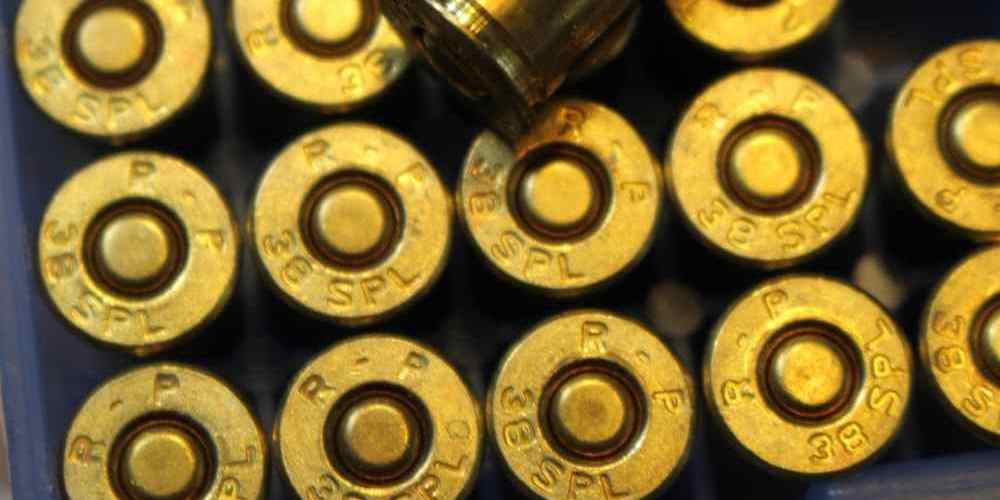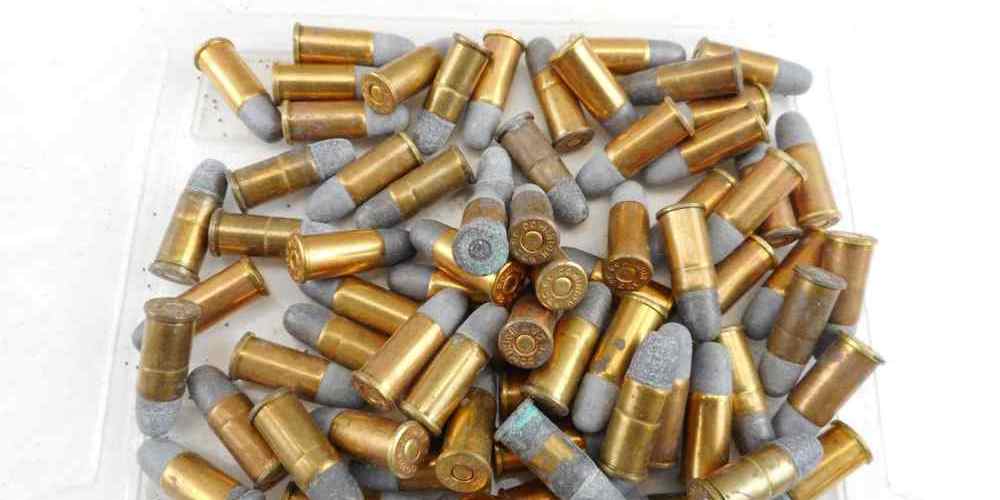“Setting the record straight on revolver ammunition myths.”
Debunking the Myth of Magic Bullets in Revolver Ammunition
Revolver ammunition has been a staple in the world of firearms for centuries, providing shooters with a reliable and powerful option for self-defense, hunting, and target shooting. However, like any other aspect of firearms, there are plenty of myths and misconceptions surrounding revolver ammunition that can lead to confusion and misinformation. In this article, we will debunk some of the most common myths about revolver ammunition and separate fact from fiction.
One of the most persistent myths about revolver ammunition is the idea of “magic bullets.” Some people believe that certain types of revolver ammunition have special properties that make them more effective than others. This myth is often perpetuated by Hollywood movies and television shows, where characters use seemingly invincible bullets to take down their enemies with ease. In reality, there is no such thing as a magic bullet.
All revolver ammunition is designed to perform a specific function, whether it be for self-defense, hunting, or target shooting. Different types of ammunition have different characteristics, such as bullet weight, velocity, and penetration power. While some types of ammunition may be more effective in certain situations than others, there is no such thing as a bullet that can guarantee a one-shot stop every time.
Another common myth about revolver ammunition is the idea that hollow point bullets are more deadly than full metal jacket bullets. Hollow point bullets are designed to expand upon impact, creating a larger wound channel and increasing the chances of stopping an attacker. While hollow point bullets are often preferred for self-defense purposes due to their stopping power, they are not inherently more deadly than full metal jacket bullets.
In fact, full metal jacket bullets are often used for target shooting and training purposes because they are less expensive and produce less recoil than hollow point bullets. While full metal jacket bullets may not expand upon impact like hollow point bullets, they can still be effective in stopping a threat if placed in the right location.
One of the most dangerous myths about revolver ammunition is the idea that reloading ammunition at home is safe and easy. While reloading can be a cost-effective way to create custom ammunition for your revolver, it is not without risks. Improperly loaded ammunition can cause malfunctions, misfires, and even catastrophic failures that can result in injury or death.
Reloading requires a thorough understanding of the components of ammunition, as well as the proper equipment and techniques for safely assembling cartridges. It is important to follow all safety guidelines and recommendations when reloading ammunition to avoid accidents and ensure the reliability of your revolver.
In conclusion, revolver ammunition is a versatile and reliable option for shooters of all skill levels. By debunking some of the most common myths surrounding revolver ammunition, we can separate fact from fiction and make informed decisions about the type of ammunition we choose to use. Remember to always prioritize safety and follow best practices when handling and using revolver ammunition to ensure a safe and enjoyable shooting experience.

Exploring the Truth Behind Hollow Point vs. Full Metal Jacket Ammo
When it comes to choosing ammunition for your revolver, there are a lot of myths and misconceptions that can make the decision-making process confusing. One of the most common debates is between hollow point and full metal jacket ammo. Let’s explore the truth behind these two types of ammunition and separate fact from fiction.
Hollow point ammunition is designed to expand upon impact, creating a larger wound channel and increasing the likelihood of stopping a threat quickly. This makes it a popular choice for self-defense purposes, as it is more effective at stopping an attacker than full metal jacket ammo. However, there is a common myth that hollow point ammo is more likely to over-penetrate and cause collateral damage. In reality, hollow point ammo is actually less likely to over-penetrate than full metal jacket ammo, as it is designed to expand and expend its energy within the target.
On the other hand, full metal jacket ammo is designed with a metal casing that covers the entire bullet, leaving the lead core exposed only at the base. This design allows the bullet to penetrate deeper into a target without expanding, making it a popular choice for target shooting and training purposes. However, there is a myth that full metal jacket ammo is less lethal than hollow point ammo. While it is true that full metal jacket ammo may not create as large of a wound channel as hollow point ammo, it can still be lethal if placed in vital areas.
Another common myth is that full metal jacket ammo is more accurate than hollow point ammo. While it is true that full metal jacket ammo may be more consistent in terms of velocity and trajectory, the accuracy of a bullet ultimately depends on the shooter’s skill and the quality of the firearm. Both hollow point and full metal jacket ammo can be accurate if used properly.
It is also important to consider the intended use of the ammunition when choosing between hollow point and full metal jacket ammo. If you are using your revolver for self-defense purposes, hollow point ammo is generally the better choice due to its stopping power and reduced risk of over-penetration. However, if you are using your revolver for target shooting or training, full metal jacket ammo may be more cost-effective and suitable for your needs.
In conclusion, when it comes to choosing ammunition for your revolver, it is important to separate fact from fiction and consider the intended use of the ammo. Hollow point ammo is more effective for self-defense purposes, while full metal jacket ammo is better suited for target shooting and training. Both types of ammo can be accurate and lethal if used properly, so it ultimately comes down to personal preference and the specific needs of the shooter. By understanding the differences between hollow point and full metal jacket ammo, you can make an informed decision and choose the best ammunition for your revolver.
Addressing the Misconceptions Surrounding +P Ammunition in Revolvers
Revolver ammunition is a topic that often sparks debate among gun enthusiasts. One common misconception that frequently arises is the use of +P ammunition in revolvers. Some believe that +P ammunition is too powerful for revolvers and can cause damage to the firearm. However, this belief is not entirely accurate.
First and foremost, it is essential to understand what +P ammunition is. +P stands for “overpressure,” which means that the cartridge is loaded to a higher pressure than standard ammunition. This results in increased velocity and energy, making +P ammunition more powerful than standard loads. While this may sound intimidating, it does not necessarily mean that +P ammunition is unsuitable for use in revolvers.
Many modern revolvers are designed to handle the increased pressure of +P ammunition. Manufacturers such as Smith & Wesson and Ruger produce revolvers that are specifically rated for +P loads. These firearms are built to withstand the additional stress that comes with firing +P ammunition, ensuring that they can handle the increased pressure without issue.
It is crucial to consult the owner’s manual of your revolver to determine whether it is rated for +P ammunition. If your firearm is not rated for +P loads, it is best to stick with standard ammunition to avoid potential damage to the gun. Using +P ammunition in a revolver that is not designed for it can lead to excessive wear and tear on the firearm, potentially causing malfunctions or even catastrophic failure.
Another common misconception surrounding +P ammunition in revolvers is that it offers significantly better performance than standard loads. While +P ammunition does provide increased velocity and energy, the difference in performance may not be as significant as some believe. In real-world scenarios, the difference in terminal ballistics between standard and +P ammunition may not be noticeable to the average shooter.
Additionally, the increased recoil and muzzle blast associated with +P ammunition can make it more challenging to shoot accurately, especially for inexperienced shooters. While some may argue that the extra power of +P ammunition is worth the trade-off in shootability, others may find that the benefits do not outweigh the drawbacks.
In conclusion, +P ammunition in revolvers is a topic that is often surrounded by myths and misconceptions. While +P ammunition is more powerful than standard loads, it is not necessarily unsuitable for use in revolvers. Many modern revolvers are designed to handle the increased pressure of +P ammunition, and as long as your firearm is rated for it, there should be no issue with using +P loads.
However, it is essential to consider the potential drawbacks of +P ammunition, such as increased recoil and muzzle blast, before deciding to use it. Ultimately, the decision to use +P ammunition in a revolver should be based on your individual needs and preferences. By separating fact from fiction and understanding the capabilities of your firearm, you can make an informed decision about whether +P ammunition is right for you.
Dispelling the Myth of Stopping Power in Revolver Ammunition
Revolver ammunition has long been a popular choice for self-defense and hunting due to its reliability and simplicity. However, there are many myths and misconceptions surrounding the stopping power of revolver ammunition that need to be addressed. In this article, we will separate fact from fiction and dispel some of the common myths surrounding revolver ammunition.
One of the most prevalent myths surrounding revolver ammunition is the idea that it has superior stopping power compared to other types of ammunition. While it is true that revolver ammunition can be effective in stopping a threat, it is not inherently more powerful than other types of ammunition. The stopping power of a bullet is determined by a variety of factors, including bullet design, velocity, and shot placement.
Another common myth is that larger caliber bullets are always more effective at stopping a threat. While it is true that larger caliber bullets can cause more damage, they are not always the best choice for self-defense. In fact, smaller caliber bullets can be just as effective if they are properly placed. Shot placement is key when it comes to stopping a threat, regardless of the caliber of the bullet.
Some people believe that hollow point bullets are the best choice for self-defense because they expand upon impact, causing more damage to the target. While it is true that hollow point bullets can be effective in self-defense situations, they are not always the best choice for every situation. Full metal jacket bullets can also be effective at stopping a threat, especially if they are properly placed.
There is a common misconception that revolver ammunition is more reliable than semi-automatic ammunition. While revolvers are known for their simplicity and reliability, semi-automatic handguns have come a long way in terms of reliability and functionality. Both types of handguns can be reliable if they are properly maintained and used correctly.
Another myth surrounding revolver ammunition is that it is more accurate than other types of ammunition. While revolvers can be accurate, they are not inherently more accurate than semi-automatic handguns. Accuracy is determined by a variety of factors, including the shooter’s skill level, the quality of the handgun, and the type of ammunition being used.
In conclusion, there are many myths and misconceptions surrounding revolver ammunition that need to be addressed. While revolvers can be effective in self-defense and hunting situations, they are not inherently more powerful, accurate, or reliable than other types of handguns. It is important to separate fact from fiction when it comes to choosing the right ammunition for your needs. By understanding the facts and dispelling the myths surrounding revolver ammunition, you can make an informed decision about which type of ammunition is best for you.
Investigating the Reality of Over-Penetration with Revolver Rounds
Revolver ammunition has long been a popular choice for self-defense and target shooting. However, there are many myths and misconceptions surrounding the use of revolver rounds, particularly when it comes to over-penetration. In this article, we will investigate the reality of over-penetration with revolver rounds and separate fact from fiction.
One common myth surrounding revolver ammunition is that it is more likely to over-penetrate than other types of ammunition. This myth stems from the belief that revolver rounds are more powerful and have a higher likelihood of passing through a target and causing collateral damage. While it is true that revolver rounds can be powerful, the idea that they are more prone to over-penetration is not necessarily accurate.
In reality, over-penetration is a concern with any type of ammunition, not just revolver rounds. The key factor in determining whether a round will over-penetrate is the type of bullet and the velocity at which it is traveling. Hollow point bullets, which are designed to expand upon impact, are less likely to over-penetrate than full metal jacket bullets, which are designed to penetrate through barriers.
Another myth surrounding revolver ammunition is that it is less accurate than other types of ammunition. This myth likely stems from the fact that revolvers have a shorter sight radius than semi-automatic pistols, making them more difficult to aim accurately. However, with proper training and practice, revolvers can be just as accurate as any other type of firearm.
When it comes to over-penetration, accuracy is key. A well-placed shot is less likely to over-penetrate than a poorly aimed one. This is why it is important for shooters to practice regularly and become proficient with their chosen firearm.
One of the biggest factors in determining whether a round will over-penetrate is the type of target being shot. Soft targets, such as flesh, are more likely to be penetrated by a bullet than hard targets, such as walls or doors. This is why it is important for shooters to be aware of their surroundings and the potential for collateral damage when using any type of ammunition.
In conclusion, the myths surrounding revolver ammunition and over-penetration are just that – myths. Revolver rounds are no more likely to over-penetrate than any other type of ammunition, and with proper training and practice, shooters can be just as accurate with a revolver as with any other firearm. The key to preventing over-penetration is to use the right type of bullet for the job and to be aware of the potential for collateral damage. By separating fact from fiction and understanding the reality of over-penetration with revolver rounds, shooters can make informed decisions about their choice of ammunition and use their firearms safely and responsibly.





